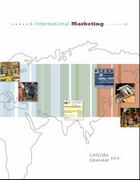Question
A household lives for two periods, has a natural logarithm utility function, and discounts the future at the rate of . Borrowing is not allowed.
A household lives for two periods, has a natural logarithm utility function, and discounts the future at the rate of . Borrowing is not allowed. In period 1, the young household consumes c1, saves s1, and works for wage w1. In period 2, the old household consumes c2, receives gross return from saving (interest rate is r), and faces unemployment risk. With a probability p, the household keeps his job and earns a wage w2, and with a probability of 1 p, the household loses his job. The government taxes all employed workers (both young and old) at a proportional rate of and evenly transfers to all unemployed workers. The population is fixed.
Write down the maximization problem of the household.
Step by Step Solution
There are 3 Steps involved in it
Step: 1

Get Instant Access to Expert-Tailored Solutions
See step-by-step solutions with expert insights and AI powered tools for academic success
Step: 2

Step: 3

Ace Your Homework with AI
Get the answers you need in no time with our AI-driven, step-by-step assistance
Get Started


